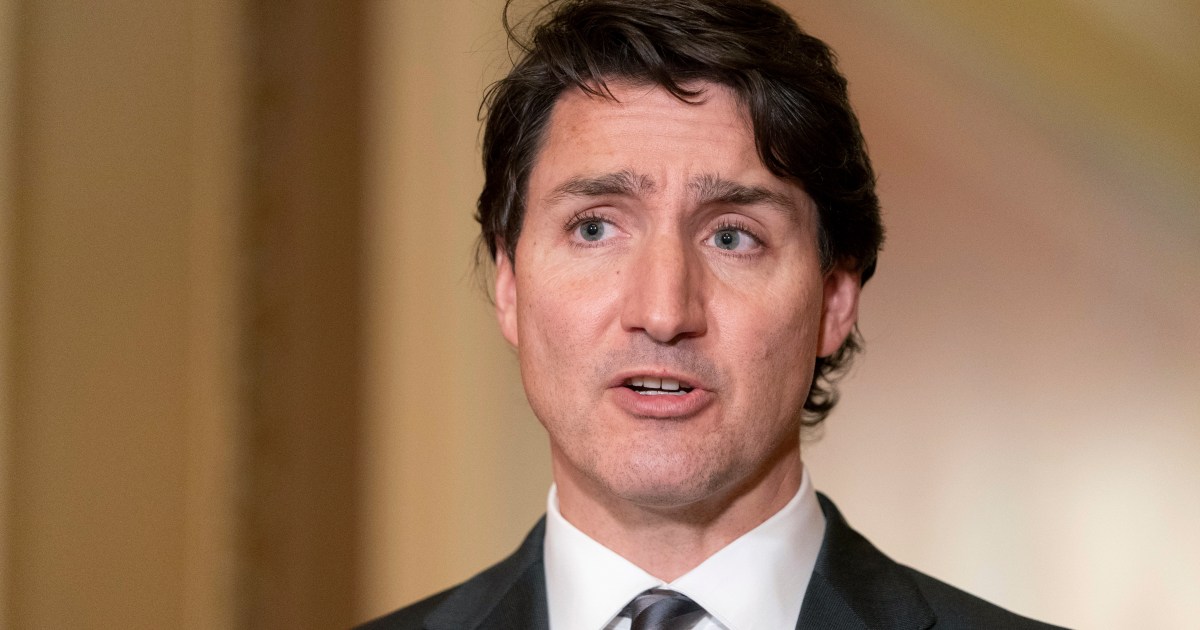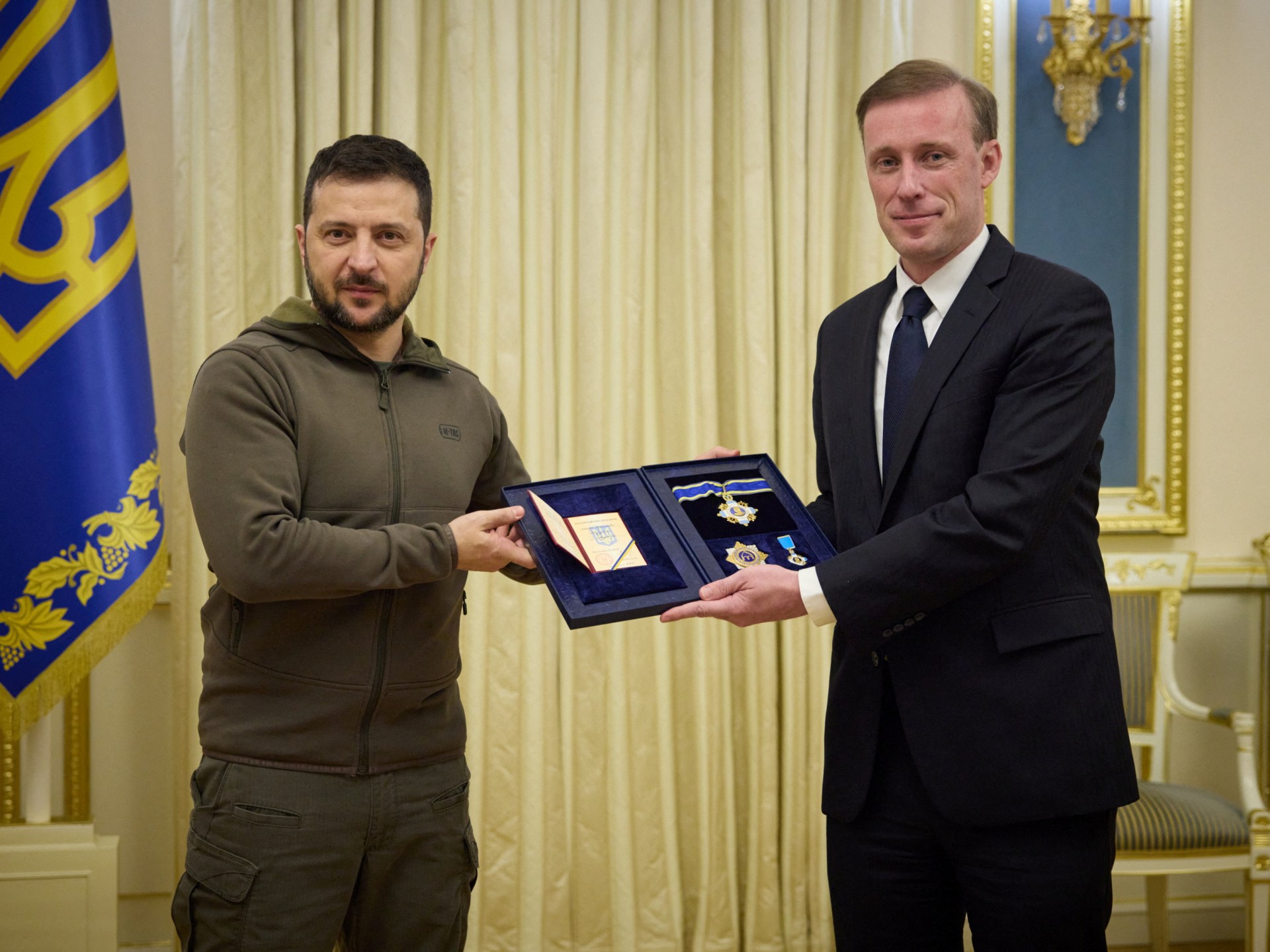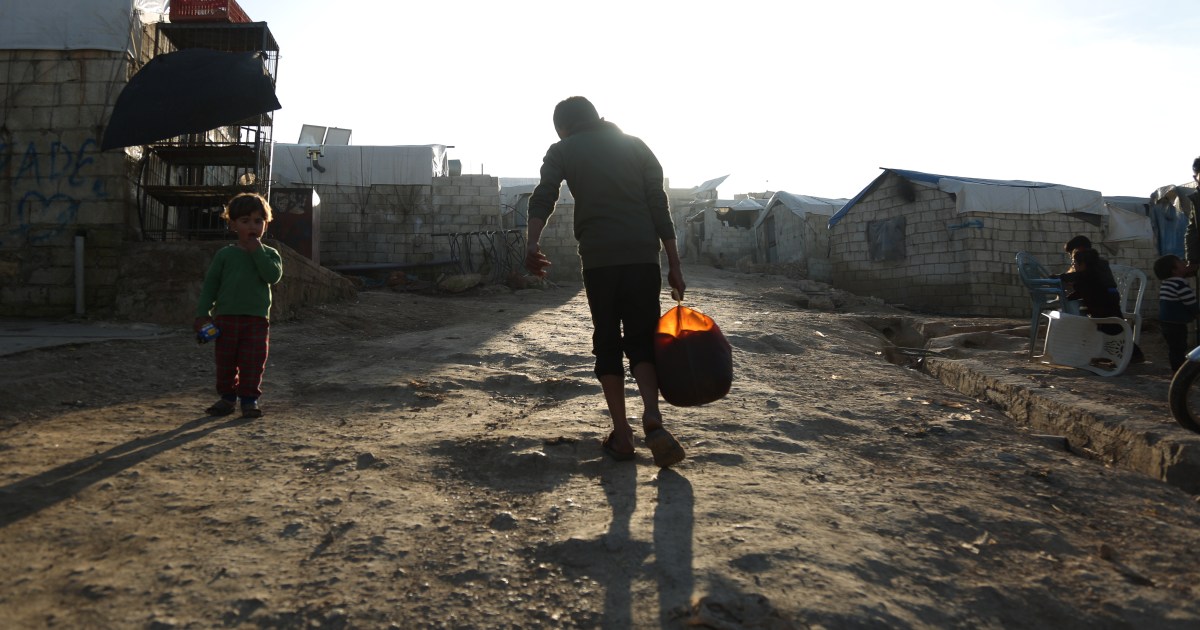At Venice Biennale, Ukrainian artists defy Russia’s invasion | Russia-Ukraine war News
Venice, Italy – When Russia launched its full-scale military invasion of Ukraine in February, Kyiv-based artist Zhanna Kadyrova suddenly questioned whether her 20-year career counted for anything, now that her family and country were in mortal danger.
“At that moment, I thought that art was nothing in this situation,” she said, speaking at her exhibition on the sidelines of this year’s Venice Biennale art festival, which opens to the public on Saturday.
But with her sister, mother and aunt sent to safety in Germany, she and her partner travelled to the remote Carpathian village of Berezovo in Western Ukraine.
There she resumed her artistic practice with the aim of raising money for armoured vests and helmets for front-line troops, as well as an organisation that supports the elderly in Kyiv with food and medicine.
Her exhibition, Palianytsia, which means bread in Ukrainian, features large stones taken from Berezovo, which she has smoothed into loaf-like shapes and sliced. Since the invasion, this everyday word, which is difficult to pronounce for Russians, has gained a new political valence – a shibboleth separating friends from enemies.
“This stone bread, I changed to real bread for people,” she told Al Jazeera.
![Ukranian artist Zhanna Kadyrova's exhibition features stones she took from the village to which she fled after Russia invaded Ukraine in February [Ruairi Casey/Al Jazeera]](https://www.aljazeera.com/wp-content/uploads/2022/04/PXL_20220420_085933899.jpg?w=770&resize=770%2C578)
The war in Ukraine has left its mark on the 59th edition of the world’s most prestigious art event, with Ukrainian artists using it as a showcase of resistance to Russia’s aggression against their people and their culture.
This year’s Ukrainian national pavilion features the work of Pavlo Markov, whose Fountain of Exhaustion sculpture consists of 78 bronze funnels arranged in a triangle, through which water drips steadily down, before being recycled.
The project was conceived in the eastern city of Kharkiv in the mid-1990s, when the city’s water supply was damaged, and became a way for the artist to engage with what he saw as a lack of cultural and political vitality in the new Ukrainian nation that emerged following the collapse of the Soviet Union.
The sculpture’s journey from Kyiv to Venice was fraught. Just after Russia’s military began the invasion, curator Maria Lanko packed the funnels in her car and made a beeline for the Polish border, taking almost a week to reach Italy.
In Milan, she found a workshop that would recreate the parts she was unable to bring.
“I really was determined to bring out the funnels at least to Venice and to still be present here,” she told Al Jazeera.
Markov and his family remained in a makeshift bomb shelter in Kharkiv’s Yermilov Arts Centre for a week, even as bombs were falling. His ageing mother had refused to leave the city until a Russian missile destroyed a nearby house.
At a news conference to launch the Ukrainian pavilion on Wednesday, Markov drew comparisons between the present-day situation of Ukrainian culture and the “executed renaissance”, a generation of Ukrainian artists and writers brutally repressed by Stalin in the 1930s. “Behind any war, there is a cultural conflict,” he said.
Markov dismissed the idea of art being able to open space for dialogue or bridge the cultural and political chasm that now separates Russia and Ukraine.
“The only dialogue that’s still possible is at the front. Maybe later, after Russian troops go back home, and the war criminals will be prosecuted, we will be able, maybe, to start this dialogue. Before this, unfortunately, it’s impossible.”
‘Cultural resistance’
The pavilion’s curatorial team have also produced the Piazza Ucraina, an open-air exhibition which stands at the centre of Venice’s Giardini della Biennale.
Only a short walk away, attendees peer into the empty Russian pavilion, left abandoned after the artists and curator pulled out, calling the war “politically and emotionally unbearable”.
At the piazza looms a tower of sandbags, a replica of the protective measures taken to preserve Ukrainian statues from damage, such as those of national poet Taras Shevchenko in Kyiv or the Duke de Richelieu in Odesa.
Around it, posters are pasted to charred wooden posts, displaying works by Ukrainian artists created since the invasion, either submitted for the event or posted to social media.
Some are fierce markers of defiance: a mother and child proudly raising their middle fingers, or a crowd pushing back a Russian armoured truck. Others reference the many atrocities committed by Russian troops, including the widespread rape of Ukrainian women.
Red ballpoint pen sketches by the artist Daniil Nemyrovskyi, who had been trapped in the besieged Black Sea port of Mariupol, show bleak scenes of people hunched close together in bunkers with meagre rations spread on a wooden table.
Each work is stamped with its exact date of creation, as if it were a piece of evidence. New posters will be added over the course of the Biennale by the Wartime Art Archive, run by the Ukrainian Emergency Art Fund (UEAF), which helps artists with financial support or access to residencies abroad.
“When the war started this usual perception of time and timeline immediately disappeared,” said Ilya Zabolotnyi, head of the UEAF. “I have a feeling that it’s one huge constant day.”
The piazza will also host talks about the role of art and culture in the conflict.
“Our public programme is focused on this cultural resistance and on the decolonising of this imperialistic narrative of Russia: refusing Ukraine to exist, refusing our identity and our difference from them,” said Lanko.
Ukrainian art also features at other events and exhibitions related to the Biennale, which will be open to the public until November 27.
The curator of this year’s main exhibition, Cecilia Alemani, added a gouache titled, Scarecrow, by Maria Prymachenko, a Ukrainian artist best known for her work in the 1930s who drew on folk traditions, some of whose work has been destroyed by Russian bombing. Alemani said the addition was “a sign of solidarity [with] Ukrainian culture”.
Another collateral Biennale exhibition, This is Ukraine: Defending Freedom, features works by international artists including Damien Hirst and Marina Abramovic, as well as a blue and yellow sign with a handwritten message from Ukrainian President Volodymyr Zelenskyy.
Outside her exhibition on the seafront, Kadyrova has surprised the passing crowds of tourists and art-goers by playing an air raid siren from a loudspeaker three times each evening.
Some scurry away, some become emotional and others cover their ears.
“I hope that they understand,” she told Al Jazeera. “Because I see a lot of people completely misunderstand our situation. It’s strange, because for me everything is clear.”
![Attendees at the pre-opening of the Venice Biennale peer into the empty Russian pavilion, which closed after the artists and curator pulled out [Ruairi Casey/Al Jazeera]](https://www.aljazeera.com/wp-content/uploads/2022/04/PXL_20220421_140159941.jpg?w=770&resize=770%2C578)




